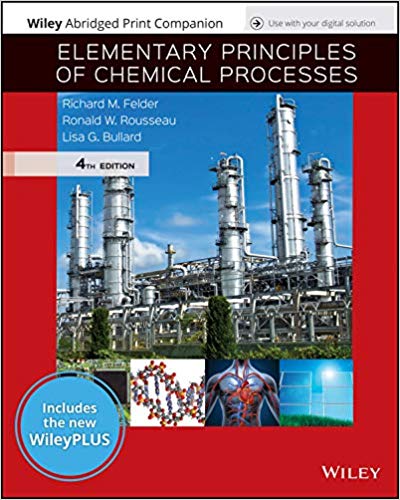Boilers are used in most chemical plants to generate steam for various purposes, such as to preheat
Question:
Boilers are used in most chemical plants to generate steam for various purposes, such as to preheat process streams fed to reactors and separation units. In one such process, steam and a cold process fluid are fed to a heat exchanger where enough energy is transferred from the steam to cause a large fraction of it to condense. The uncondensed steam is vented to the atmosphere, and the liquid condensate is recycled to a desecrator into which another liquid stream (makeup water) is fed. The makeup water contains some dissolved impurities and other chemicals that help prevent deposition of solids on boiler walls and heating elements, which would lead to a reduction in operating efficiency and eventually to safety hazards, possibly including explosions. The liquid leaving the desecrator is the feed to the boiler.
In the boiler, most of the water in the feed evaporates to form steam, and some of the impurities in the feed water precipitate to form solid particles suspended in the liquid (kept in suspension by the chemical additives in the makeup water). The liquid and suspended solids are drawn off as boiler blow down, either in manual bursts or with a continuous blowdown system.
A diagram of the system is shown below. The symbol I is used for combined impurities and chemical additives. The makeup water contains 1.0 kg I/2.0 × 103 kg H2O, and the ratio in the blow down is 1.0 kg I/3.5 × 102 kg H2O. Of the steam fed to the heat exchanger, 76% is condensed.
.png)
(a) In your own words, describe why makeup water, chemical additives to the makeup water, and blow down are necessary in this process. Speculate on the probable disadvantage of making the I/H2O ratio in the blow down (i) too small, and (ii) too large.
(b) Assume a basis of calculation and draw and fully label a flowchart of the process. (When you draw the heat exchanger you can omit the process fluid, which plays no role in the problem.)
(c) Carry out a degree-of-freedom analysis and outline a solution procedure (which equations would you write in which order to calculate all of the unknowns on the chart?).
(d) Calculate the ratio (mass of makeup water/100 kg steam produced in boiler) and the percentage of the boiler feed water taken off as blow down.
(e) A proposal has been made to use highly purified water as makeup. List the benefits that would result from doing so and the most likely reason for not doing it.
Step by Step Answer:

Elementary Principles of Chemical Processes
ISBN: 978-1119498759
4th edition
Authors: Richard M. Felder, Ronald W. Rousseau, Lisa G. Bullard





